#november 1852
Text
So I've been thinking a lot about the tally

I think it's safe to assume that these numbers cover only their 3 years of high school - Hinata says later on that he hasn't counted his beach volleyball games yet. Meaning, they got into roughly ~2200 competitions over the course of three years, though not all of them were volleyball games (they also compete in races, and other silly things like who can eat faster and etc.)
(It's a little unclear whether the tally only accounts for wins when they're competing against each other, though - I'll assume that's the case since it'd be kinda unfair otherwise lol)
BUT. Here comes the interesting part. This is their updated tally, as of 2022 (the All-Stars special match):

According to the Haikyuu wiki, the Black Jackals vs. Schweiden Adlers game happened in November 2018. The All-stars match happened in August 2022. That's about 45 months later - meaning, they got into another 1852 competitions in the span of almost four years.
But, but.... before, during high school, these morons saw each other almost every single day. They competed on almost EVERYTHING, and averaged a total of 2 competitions per day.
Now, though- they lived in different cities during Hinata's first year in the V.League, and after that Kageyama moved to Italy. As of 2022, Hinata is back in Brazil playing for Asas São Paulo. Meaning, for the better part of these last 4 years, these two weren't even in the same country.
And yet they kept the tally going, counting almost religiously. So that's 1852 competitions over 45 months - average of 1,37 competitions per day. Meaning, on average, Hinata and Kageyama must've talked to each other at least once a day, for four years, to update their tally.
TL;DR they probably talk to each other regularly and that makes me so happy. Even though they're not in the same team (or even the same country) they still keep thinking about each other every. single. day.
#kagehina#hinata shouyou#kageyama tobio#haikyuu!!#haikyuu#haikyuu manga#haikyuu manga spoiler#when i first saw the updated tally count i did a double take#that was a big jump. almost doubled their numbers#and they weren’t even in the same country!!!!#screams
3K notes
·
View notes
Text
A Huguenot, on St. Bartholomew's Day, Refusing to Shield Himself from Danger by Wearing the Roman Catholic Badge (1851–52) is the full, exhibited title of a painting by John Everett Millais, and was produced at the height of his Pre-Raphaelite period. It was accompanied, at the Royal Academy of Arts in London in 1852, with a long quote reading: "When the clock of the Palais de Justice shall sound upon the great bell, at daybreak, then each good Catholic must bind a strip of white linen round his arm, and place a fair white cross in his cap. —The order of the Duke of Guise."
It depicts a pair of young lovers and is given a dramatic twist because the woman, who is Catholic, is attempting to get her beloved, who is Protestant, to wear the white armband declaring allegiance to Catholicism. The young man firmly pulls off the armband at the same time that he gently embraces his lover, and stares into her pleading eyes. The incident refers to the St. Bartholomew's Day massacre on August 24, 1572, when around 3,000 French Protestants (Huguenots) were murdered in Paris, with around 20,000 massacred across the rest of France. A small number of Protestants escaped from the city through subterfuge by wearing white armbands.
Millais had initially planned simply to depict lovers in a less dire predicament, but supposedly had been persuaded by his Pre-Raphaelite colleague William Holman Hunt that the subject was too trite. After seeing Giacomo Meyerbeer's opera Les Huguenots of 1836 at Covent Garden, which tells the story of the massacre, Millais adapted the painting to refer to the event. In the opera, Valentine attempts unsuccessfully to get her lover Raoul to wear the armband. The choice of a pro-Protestant subject was also significant because the Pre-Raphaelites had previously been attacked for their alleged sympathies to the Oxford Movement and to Catholicism.
Millais painted the majority of the background near Ewell in Surrey in the late summer and autumn of 1851, while he and Hunt were living at Worcester Park Farm. It was from a brick wall adjoining an orchard. Some of the flowers depicted in the scene may have been chosen because of the contemporary interest in the so-called language of flowers. The blue Canterbury Bells at the left, for example, can stand for faith and constancy. Returning to London after the weather turned too cold to work out-of-doors in November, he painted in the figures: the face of the man was from that of Millais's family friend Arthur Lemprière, and the woman was posed for by Anne Ryan.
The painting was exhibited with Ophelia and his portrait of Mrs. Coventry Patmore (Fitzwilliam Museum, Cambridge) at the Royal Academy of Arts in 1852, and helped to change attitudes towards the Pre-Raphaelites. Tom Taylor wrote an extremely positive review in Punch. It was produced as a reproductive print by the dealer D. White and engraved in mezzotint by Thomas Oldham Barlow in 1856. This became Millais's first major popular success in this medium, and the artist went on to produce a number of other paintings on similar subjects to serve a growing middle class market for engravings. These include The Order of Release, 1746 (Tate, London), The Proscribed Royalist, 1651 (Lord Lloyd-Webber Collection), and The Black Brunswicker (Lady Lever Art Gallery, Port Sunlight). All were successfully engraved.
There are smaller watercolor versions of the picture in The Higgins Art Gallery, Bedford, the Fogg Art Museum, Harvard University, and a reduced oil replica in the Lord Lloyd-Webber Collection, all by Millais.
67 notes
·
View notes
Text

The Sagrada Familia - Barcelona - Spain
The Basílica i Temple Expiatori de la Sagrada Família, otherwise known as Sagrada Família, is a church under construction in the Eixample district of Barcelona, Catalonia, Spain. It is the largest unfinished Catholic church in the world. Designed by Catalan architect Antoni Gaudí (1852–1926), in 2005 his work on Sagrada Família was added to an existing (1984) UNESCO World Heritage Site, "Works of Antoni Gaudí". On 7 November 2010, Pope Benedict XVI consecrated the church and proclaimed it a minor basilica.
On 19 March 1882, construction of Sagrada Família began under architect Francisco de Paula del Villar. In 1883, when Villar resigned, Gaudí took over as chief architect, transforming the project with his architectural and engineering style, combining Gothic and curvilinear Art Nouveau forms. Gaudí devoted the remainder of his life to the project, and he is buried in the church's crypt. At the time of his death in 1926, less than a quarter of the project was complete.
Relying solely on private donations, Sagrada Família's construction progressed slowly and was interrupted by the Spanish Civil War. In July 1936, anarchists from the FAI set fire to the crypt and broke their way into the workshop, partially destroying Gaudí's original plans. In 1939, Francesc de Paula Quintana took over site management, which was able to go on with the material that was saved from Gaudí's workshop and that was reconstructed from published plans and photographs. Construction resumed to intermittent progress in the 1950s. Advancements in technologies such as computer-aided design and computerised numerical control (CNC) have since enabled faster progress and construction passed the midpoint in 2010. In 2014, it was anticipated that the building would be completed by 2026, the centenary of Gaudí's death, but this schedule was threatened by work slowdowns caused by the 2020–2021 depths of the COVID-19 pandemic. In March 2024, an updated forecast reconfirmed a likely completion of the building in 2026, though the announcement stated that work on sculptures, decorative details and a controversial proposed stairway leading to what will eventually be the main entrance is expected to continue until 2034.
Describing Sagrada Família, art critic Rainer Zerbst said "it is probably impossible to find a church building anything like it in the entire history of art", and Paul Goldberger describes it as "the most extraordinary personal interpretation of Gothic architecture since the Middle Ages". The basilica is not the cathedral church of the Archdiocese of Barcelona, as that title belongs to the Cathedral of the Holy Cross and Saint Eulalia (Barcelona Cathedral).
20 notes
·
View notes
Text

Saint Rose Philippine Duchesne
1769-1852
Feast Day: November 18
Patronage: perseverance amid adversity, Dioceses of Springfield-Cape Girardeau, MO.
Saint Rose Philippine Duchesne was born in France and lived through the French Revolution. In 1804 Rose befriended St. Madeleine Sophie Barat and entered the Society of the Sacred Heart. She dreamed of serving the Native Americans and at age 49 she and four sisters were sent as missionaries to the Louisiana Territory to establish the Society’s presence in America. With Divine grace, courage, an iron will and a lot of faith she started free schools for girls and Native Americans in Missouri and Kansas. The Native Americans called her "Woman Who Prays Always.” St. Rose is the first canonized female saint west of the Mississippi.
Prints, plaques & holy cards available for purchase here: (website)
#Portraitsofsaints#Feastday#Saintoftheday#Saintquotes#StRosePhilippineDuchesne#SaintRosePhilippineDuchesne#Frenchnun#patronsaint#patronsaints#saintportrait
59 notes
·
View notes
Text



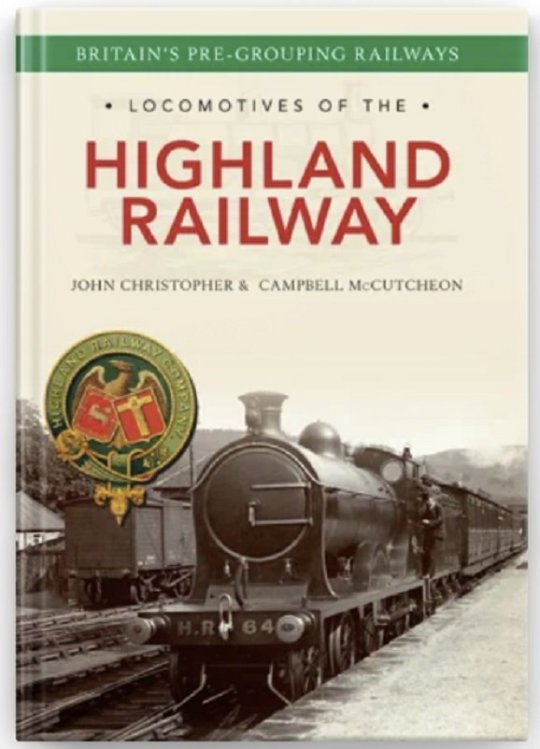

On February 1st 1865 the Highland Railway was formed from the amalgamation of Inverness and Perth Junction and the Inverness and Aberdeen Junction Railways.
Back in the day every region had it’s own local railway company covering the different areas around the country. The Highland Railway ran from Perth in Central Scotland north to Inverness and then on up the east coast to Wick and Thurso. From Dingwall, the railway ran west to Kyle of Lochalsh to serve Skye and the Western Isles. From Inverness, another line ran east to Keith, where it connected with the line to Aberdeen. Several branches were built from this core network to serve nearby towns.
This is a longer post than I normally put together but hope you get an idea of how all these wee companies ran, and ended up becoming the one company, before of course the bigger companies ate them all up. Some of the stations are now gone, but others mentioned, like Kingussie, Nairn, Keith and Dunkeld survive to this day, and I often pass through them on my travels north. It also gives us an insight intothe infamous Beeching cuts in the 60’s which butchered the rail network, if Beeching had his way there would be no railways beyond Inverness!!
Inverness was always the centre of the Highland Railway. It was the company’s headquarters and principle station. All trains led to Inverness.
The original proposals to construct railways to Inverness were made in the mid-1840s. Rival routes were proposed from Perth and Aberdeen . The Perth & Inverness Railway was considered too hilly for the locomotives of the day, but the Great North of Scotland Railway (GNSR) from Aberdeen was authorised. The GNSR struggled to raise capital in the post-railway mania period and eventually started construction as far as Huntly in 1852, opening that line in 1854.
The people of Inverness then stepped in and started building their own line from the Inverness end, initially as far as Nairn, the Inverness & Nairn Railway (I&N) was opened on 6th. November 1855 but by then plans were being made to extend this railway to meet the GNSR. After some discussion, the Inverness & Aberdeen Junction Railway (I&AJ) was promoted to build the line from Nairn to Keith where it met the GNSR extension from Huntly. The I&AJ was completed on 18th. August 1858,when it took over the working of the I&N.
The people of Inverness were never satisfied with the long journey round via Aberdeen , especially as the GNSR’s station was half a mile from that of the line from the south and connections were not always maintained. Thus was born the Inverness and Perth Junction Railway (I&PJR) which ran from Forres via Grantown, Kingussie and Drumochter summit to Dunkeld where it met with end on with the Perth and Dunkeld Railway which had opened in 1856. The I&P was authorised in 1861 and opened just two years later, being worked from the outset by the I&AJR. The two companies amalgamated on 1st. February 1865 to form the Highland Railway.
Meanwhile construction northwards from Inverness had already started, with a line to Dingwall (1862), Invergordon (1863), Bonar Bridge (1864), Golspie (1868), Helmsdale (1871) and Wick and Thurso (1874). Westward from Dingwall, the Dingwall & Skye Railway was opened to Strome Ferry in 1870.
In the 1890s, two additions were made to the main network. The direct line from Aviemore over Slochd to Inverness was completed in 1898, a year after the Skye line was extended to the present terminus at Kyle of Lochalsh. Several branches were opened from these main lines over the next 40 years, taking the final length of the system to some 242 route miles.Tourist traffic has always been a major source of income for the railways in the Highlands . The Highland Railway developed its own hotels at Inverness , Dornoch and Strathpeffer. It offered combined tours in conjunction with the steamer services of David MacBrayne. Each August it had to contend with the annual migration north for the ‘glorious twelfth.’
The railway played a major part in the First World War, when the Grand Fleet was stationed at Scapa Flow in the Orkney Islands . Worn down, like many other railways in the country, it became part of the London , Midland and Scottish Railway in 1923. The LMS continued to develop the lines, introducing dining cars and speeding up services. The Second World War again imposed a considerable strain on the lines.
On the nationalisation of the railways, the Scottish Region of British Railways took over. Soon the development of road transport made a significant impact on the use of the railway. The closure of branch lines, which had started in the 1930s, continued. The Beeching Plan of 1963 envisaged the closure of all lines north of Inverness , but this was not approved because those lines still provided a lifeline in winter. The old route from Aviemore to Forres and a number of intermediate stations on the main lines, were closed. Otherwise the main system remained intact, as it does today. Currently operated by ScotRail, the lines continue to provide a vital link to locals and bring many tourists to the area.
The Highland Railway was well known for its locomotives. Working the steep gradients of the main line, in particular, was always a challenge. Add strong winds and snow and the problems became even worse. The railway introduced the first 4-6-0s to the British Isles, commemorated in the preserved No.103 at the Glasgow Transport Museum . In the 1930s, the LMS Black 5s, locally always called “Hikers”, immediately proved their worth. The isolated nature of the country led British Railways to implement complete dieselisation early in the modernisation plan.
Today class 158 and 170 diesel multiple units work most of the trains, but you can still retire to bed in a sleeper on the line out of London Euston and wake up to the sound of a Class 67 struggling up Drumochter.
39 notes
·
View notes
Note
How many presidents have had both of their parents alive when they were president?
Three Presidents have had both parents alive when they became President:
•Ulysses S. Grant
Grant was the first President with both of his parents alive at the time of his inauguration. His father, Jesse Root Grant, died on June 29, 1873 during Grant’s second term. His mother, Hannah Simpson Grant, survived both of his terms and died two years before he did, on May 11, 1883.
•John F. Kennedy
Not only were both of JFK’s Presidents alive when he became President, but they are the only parents of a President who both outlived him. JFK was assassinated in 1963. His father, Joseph P. Kennedy Sr., died in 1969, and his mother, Rose Fitzgerald Kennedy died in 1995 at the age of 104.
•George W. Bush
Both of Bush’s parents were alive when he took office and survived his entire two-term Presidency. His father, former President George H.W. Bush, died on November 30, 2018, just six months after the death of his mother, Barbara Bush, in April 2018.
Several Presidents have had either their father or mother still alive when they became President:
FATHER
•John Quincy Adams: The first son of a President to be elected President himself was also the first President whose father was still alive at the time of his inauguration. John Adams died July 4, 1826, a little over a year into JQA’s Presidency.
•Millard Fillmore: Nathaniel Fillmore lived through his son’s entire Presidency (1850-1853) and died in his 90s during the Civil War, on March 28, 1863.
•Warren G. Harding: Harding’s father, George Tryon Harding, lived through his son’s entire Administration and died on November 19, 1928. Harding, who died in office on August 2, 1923, was the first President who was outlived by his father.
•Calvin Coolidge: Not only did Coolidge’s father, John Calvin Coolidge, live to see his son become President, but he actually administered the oath of office. Coolidge, the Vice President at the time, was visiting his father when President Harding died in office and the elder Coolidge, a notary public, administered the Presidential oath at the family home in Vermont. Coolidge’s father died on March 18, 1926 during President Coolidge’s second term.
MOTHER
•George Washington: Mary Ball Washington died August 25, 1789, a little less than four months after his first inauguration.
•John Adams: Susanna Boylston Adams died April 21, 1797, just under two months after Adams became President.
•James Madison: Eleanor Conway Madison lived through both of her son’s terms as President (1809-1817) and died February 11, 1829 at the age of 98.
•James K. Polk: Polk was the first President who didn’t outlive his mother. She died on January 11, 1852, almost three years after Polk left office and died.
•James Garfield: Garfield’s mother, Eliza Ballou Garfield, lived to see him become President and die in office. She died on January 21, 1888, almost seven years after he was assassinated.
•William McKinley: McKinley’s mother, Nancy Allison McKinley, lived to attend her son’s first inauguration, but died several months later, December 12, 1897.
•Franklin D. Roosevelt: FDR’s mother, Sara Delano Roosevelt, lived to see her son inaugurated three times. She died during her son’s third term, on September 7, 1941.
•Harry S. Truman: Truman’s mother, Martha Young Truman, lived to see her son succeed to the Presidency in April 1945. She died during his first term, on July 26, 1947, at the age of 94.
•Jimmy Carter: Lillian Carter lived through her son’s entire Presidency and was even sent to represent him at events overseas several times, which made her a celebrity in her own right during his Presidency. She died on April 30, 1983, two years after Carter left the White House.
•George H.W. Bush: Bush’s mother, Dorothy Walker Bush, lived to see her son become President. She died on November 19, 1992, two weeks after her son lost his bid for re-election.
•Bill Clinton: Virginia Cassidy Kelley, Clinton’s mother, lived to see him become President but died less than a year later, on January 6, 1994.
#Presidents#History#Presidency#Presidential History#Presidential Stats#Presidential Data#POTUS Stats#POTUS Data#First Families#Presidential Parents#Parents of the Presidents#Fathers of the Presidents#Mothers of the Presidents#Presidential Families
10 notes
·
View notes
Text
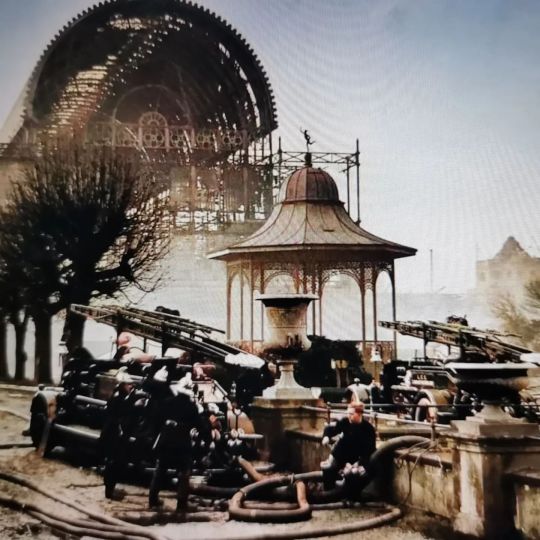

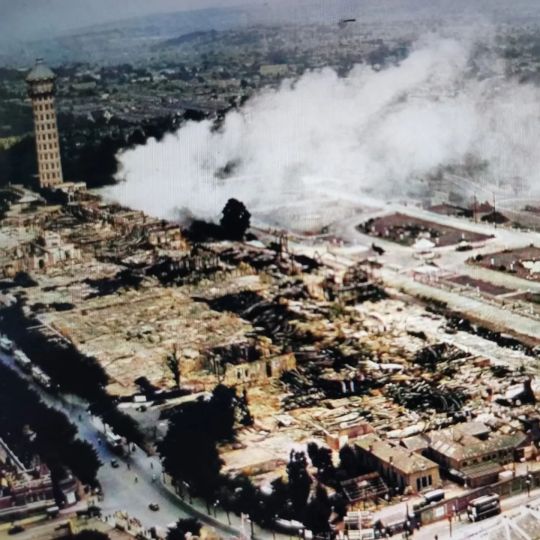







The fire and destruction of The Crystal Palace in 1936.
I have just come across some amazing coloured pictures of the disaster, and pictures I havnt seen before.
The Crystal Palace, made from cast iron and glass was originally built in Hyde Park to house the Great Exhibition in 1851.
Remarkably, once the Exhibition had finished, a group of businessmen decided to move it, piece by piece to Sydenham Hill 1852.
On the evening of November 30th 1936, a small fire had started in the women's cloakroom, two employees who had started fighting it, soon realised that it was getting out of hand and called Penge Fire Brigade. 89 fire engines and over 400 fireman eventually arrived to tackle the blaze, but within hours due to the high winds, it took only a matter of hours to destroy the building. (The fire had caught the timber flooring, and along with the huge amount of inflammable material within the building as well, accelerated the fire.) It was estimated that a crowd of 100,000 Londoners came to see the blaze during the night and following morning, including Winston Churchill, who said, "This is the end of an age"
John Logie Baird had been using the the lower level of the Palace for testing his "Mechanical Television" experiments, and much of his work was destroyed in the fire. Laird suspected the the fire was sabotage because of certain objections to his work. But the true cause of the fire remained unknown.
Certain demolition was done to make it safe, and both towers were brought down, it was rumoured because they could act as beacons to the predicted arrival of German bombers in the expected forthcoming war.
Soon, I hope to eventually go and see the site and what's left of the Palace, it's always been a cause of great fascination to me.
Pics, 1,2,and 3 show the morning after.
Pics. 4, 5 and 6 shows the extensive damage.
Pics. 7 and 8 show demolition work underway, and the one of the towers coming down.
Pic. 9 shows the skeleton of the main building.
Pic. 10. The Palace in all it's magnificence.
23 notes
·
View notes
Photo


The frangipani tree, called tipanie in French Polynesia, takes its name from the Italian perfumer frangipani who invented a fragrance similar to the flower of this tree. In addition, to have an intoxicating scent, the flowers of tipanie, in various colors, are magnificent.
The first frangipani trees took root in Tahiti in 1852 thanks to the nurseryman Mr. Abadie, originally from Valparaiso. It is the Plumeria genus which is the most widespread in the fenua. It has several varieties whose origins come from Central America, Mexico, Cuba and Colombia.
The origin of its common name, frangipani, is the subject of several explanations. We have retained the story of the perfumer Frangipani. In the 12th century, the Italian Frangipani made a highly appreciated perfume that European explorers found four centuries later when they arrived in the Caribbean on this tree. The name of the perfumer is then simply attributed to the tree.
In Polynesia, the tipanie is used to make very fragrant neck or head crowns.
Flowering all year round, but more particularly from October to November, the tipanie produces magnificent flowers with five petals. The flower has an intoxicating fragrance. There are several varieties producing single or two-tone, white, yellow, pink, yellow or red flowers and even a dark garnet that is highly sought after by Tahitian mamas.
Recognized for its olfactory properties, the frangipani flower is used in perfumery in the form of an absolute. As a top, middle or base note, it brings an exotic, honeyed and almondy component to cosmetic products. In Asia, the infusion of tipanie flowers is applied to the body after bathing for its pleasant fragrance and its invigorating action.
75 notes
·
View notes
Text
Hello! I plan to start posting my MPHFPC oc Loop onto this account, so I thought I’d start with the oc that it makes the most sense to start with, the (main) Ymbryne. Any questions about the character? Just drop an ask, and i’ll answer it as soon as possible. Also, i have no artistic ability so the picrew used is that of the makowka character maker, so all credit for that goes to them!
BASICS
Name: Luisa Greywood
Nickname /Alias(es): Miss Peacock
Gender: Female
Species: Syndrigasti
Age: 56 (172)
Birthday: 4th November 1852
FAMILY/FRIENDS
Mother: Rosalia Knowles
Father: Arthur Greywood
Sibling(s): n/a
Crush/Lover/Significant Other: N/a
Best Friend(s): n/a
Pets: During her training/early days of her loop, she raised a grimbear, but it passed away from illness and she couldn’t bring herself to get another.
APPEARANCE

Hair: Black
Eyes: Dusk Blue
Skin tone: Light
Height: 157cm
Build: Short, Stout
Birthmarks/Freckles/Scars: Scars below left eye and right side of mouth from a rogue ymbryne that attacked her.
Other: Wears no jewellery other than earrings - finds any other too restrictive.
Fashion Sense / Dress Style: As her main area of interest, she stays up to date with modern fashion for her visits to the present, as well as keeping and maintaining her favourite outfits and trends from the last 130 or so years.
PERSONALITY
Likes: Unsolved Mysteries, Pretty Outfits, Fruit Teas, Teaching, Meditation
Dislikes: Wights, Hollowgasts, Dirty Clothing, Tight Clothing, Other Ymbrynes sticking their beaks into her affairs
Strengths: Smart, Quick-witted, Creative
Weaknesses: Extremely Paranoid, Over-Protective of her wards, Distrustful of Adults
Habits: Joint Cracking, Finger Clicking
Interests: Fashion/Clothing, Clockwork Mechanisms
Talents: Is incredible at matching outfits to time periods and making sure that her outfit is correct when dealing with loops and the present
Hobbies: Needlepoint, Clockwork toy making.
BACKGROUND
Nationality: English/Spanish
Place of Birth: Cambridge, England
Has moved to/visited/lived in: Various English Cities, Miss Avocet and Miss Bunting’s Ymbryne Academy, Lancashire (Her First Loop)
PECULIARITY
What is their peculiarity?: Ymbryne (Bird Transformation and Loop Creation)
Where and when is their loop?: Yorkshire, Based out of an old abandoned schoolhouse
Who is their Ymbryne?: Herself
What time are they originally from?: 1852
EXTRA STUFF
Spoken Languages: Spanish, English, French, German, Old Peculiar, Portugese
Current Status (Alive, dead, unknown, etc.): Alive
Sexual Preference (Optional): No <3
#mphfpc#miss peregrines home for peculiar children#mphfpc oc#oc#ymbryne#miss peregrine’s home for peculiar children
8 notes
·
View notes
Text
November 21st is World Hello Day! The purpose of today is to illustrate the importance of personal communication for preserving peace.
For today, Howard letterpress printed using the largest wood type (30 line pica) that we have in our print shop exhibit. This is, indeed, the biggest HELLO we can print. This was printed in red oil base ink using our Washington hand press, which was made in 1852.
#history#museum#hello#hello tumblr#sacramento#old sacramento#art#letterpress#printing#asmr#oddly satisfying#typography
51 notes
·
View notes
Text
The napoleonic marshal‘s children
After seeing @josefavomjaaga’s and @northernmariette’s marshal calendar, I wanted to do a similar thing for all the marshal’s children! So I did! I hope you like it. c:
I listed them in more or less chronological order but categorised them in years (especially because we don‘t know all their birthdays).
At the end of this post you are going to find remarks about some of the marshals because not every child is listed! ^^“
To the question about the sources: I mostly googled it and searched their dates in Wikipedia, ahaha. Nevertheless, I also found this website. However, I would be careful with it. We are talking about history and different sources can have different dates.
I am always open for corrections. Just correct me in the comments if you find or know a trustful source which would show that one or some of the dates are incorrect.
At the end of the day it is harmless fun and research. :)
Pre 1790
François Étienne Kellermann (4 August 1770- 2 June 1835)
Marguerite Cécile Kellermann (15 March 1773 - 12 August 1850)
Ernestine Grouchy (1787–1866)
Mélanie Marie Josèphe de Pérignon (1788 - 1858)
Alphonse Grouchy (1789–1864)
Jean-Baptiste Sophie Pierre de Pérignon (1789- 14 January 1807)
Marie Françoise Germaine de Pérignon (1789 - 15 May 1844)
Angélique Catherine Jourdan (1789 or 1791 - 7 March 1879)
1790 - 1791
Marie-Louise Oudinot (1790–1832)
Marie-Anne Masséna (8 July 1790 - 1794)
Charles Oudinot (1791 - 1863)
Aimee-Clementine Grouchy (1791–1826)
Anne-Francoise Moncey (1791–1842)
1792 - 1793
Bon-Louis Moncey (1792–1817)
Victorine Perrin (1792–1822)
Anne-Charlotte Macdonald (1792–1870)
François Henri de Pérignon (23 February 1793 - 19 October 1841)
Jacques Prosper Masséna (25 June 1793 - 13 May 1821)
1794 - 1795
Victoire Thècle Masséna (28 September 1794 - 18 March 1857)
Adele-Elisabeth Macdonald (1794–1822)
Marguerite-Félécité Desprez (1795-1854); adopted by Sérurier
Nicolette Oudinot (1795–1865)
Charles Perrin (1795–15 March 1827)
1796 - 1997
Emilie Oudinot (1796–1805)
Victor Grouchy (1796–1864)
Napoleon-Victor Perrin (24 October 1796 - 2 December 1853)
Jeanne Madeleine Delphine Jourdan (1797-1839)
1799
François Victor Masséna (2 April 1799 - 16 April 1863)
Joseph François Oscar Bernadotte (4 July 1799 – 8 July 1859)
Auguste Oudinot (1799–1835)
Caroline de Pérignon (1799-1819)
Eugene Perrin (1799–1852)
1800
Nina Jourdan (1800-1833)
Caroline Mortier de Trevise (1800–1842)
1801
Achille Charles Louis Napoléon Murat (21 January 1801 - 15 April 1847)
Louis Napoléon Lannes (30 July 1801 – 19 July 1874)
Elise Oudinot (1801–1882)
1802
Marie Letizia Joséphine Annonciade Murat (26 April 1802 - 12 March 1859)
Alfred-Jean Lannes (11 July 1802 – 20 June 1861)
Napoléon Bessière (2 August 1802 - 21 July 1856)
Paul Davout (1802–1803)
Napoléon Soult (1802–1857)
1803
Marie-Agnès Irma de Pérignon (5 April 1803 - 16 December 1849)
Joseph Napoléon Ney (8 May 1803 – 25 July 1857)
Lucien Charles Joseph Napoléon Murat (16 May 1803 - 10 April 1878)
Jean-Ernest Lannes (20 July 1803 – 24 November 1882)
Alexandrine-Aimee Macdonald (1803–1869)
Sophie Malvina Joséphine Mortier de Trévise ( 1803 - ???)
1804
Napoléon Mortier de Trévise (6 August 1804 - 29 December 1869)
Michel Louis Félix Ney (24 August 1804 – 14 July 1854)
Gustave-Olivier Lannes (4 December 1804 – 25 August 1875)
Joséphine Davout (1804–1805)
Hortense Soult (1804–1862)
Octavie de Pérignon (1804-1847)
1805
Louise Julie Caroline Murat (21 March 1805 - 1 December 1889)
Antoinette Joséphine Davout (1805 – 19 August 1821)
Stephanie-Josephine Perrin (1805–1832)
1806
Josephine-Louise Lannes (4 March 1806 – 8 November 1889)
Eugène Michel Ney (12 July 1806 – 25 October 1845)
Edouard Moriter de Trévise (1806–1815)
Léopold de Pérignon (1806-1862)
1807
Adèle Napoleone Davout (June 1807 – 21 January 1885)
Jeanne-Francoise Moncey (1807–1853)
1808: Stephanie Oudinot (1808-1893)
1809: Napoleon Davout (1809–1810)
1810: Napoleon Alexander Berthier (11 September 1810 – 10 February 1887)
1811
Napoleon Louis Davout (6 January 1811 - 13 June 1853)
Louise-Honorine Suchet (1811 – 1885)
Louise Mortier de Trévise (1811–1831)
1812
Edgar Napoléon Henry Ney (12 April 1812 – 4 October 1882)
Caroline-Joséphine Berthier (22 August 1812 – 1905)
Jules Davout (December 1812 - 1813)
1813: Louis-Napoleon Suchet (23 May 1813- 22 July 1867/77)
1814: Eve-Stéphanie Mortier de Trévise (1814–1831)
1815
Marie Anne Berthier (February 1815 - 23 July 1878)
Adelaide Louise Davout (8 July 1815 – 6 October 1892)
Laurent François or Laurent-Camille Saint-Cyr (I found two almost similar names with the same date so) (30 December 1815 – 30 January 1904)
1816: Louise Marie Oudinot (1816 - 1909)
1817
Caroline Oudinot (1817–1896)
Caroline Soult (1817–1817)
1819: Charles-Joseph Oudinot (1819–1858)
1820: Anne-Marie Suchet (1820 - 27 May 1835)
1822: Henri Oudinot ( 3 February 1822 – 29 July 1891)
1824: Louis Marie Macdonald (11 November 1824 - 6 April 1881.)
1830: Noemie Grouchy (1830–1843)
——————
Children without clear birthdays:
Camille Jourdan (died in 1842)
Sophie Jourdan (died in 1820)
Additional remarks:
- Marshal Berthier died 8.5 months before his last daughter‘s birth.
- Marshal Oudinot had 11 children and the age difference between his first and last child is around 32 years.
- The age difference between marshal Grouchy‘s first and last child is around 43 years.
- Marshal Lefebvre had fourteen children (12 sons, 2 daughters) but I couldn‘t find anything kind of reliable about them so they are not listed above. I am aware that two sons of him were listed in the link above. Nevertheless, I was uncertain to name them in my list because I thought that his last living son died in the Russian campaign while the website writes about the possibility of another son dying in 1817.
- Marshal Augerau had no children.
- Marshal Brune had apparently adopted two daughters whose names are unknown.
- Marshal Pérignon: I couldn‘t find anything about his daughters, Justine, Elisabeth and Adèle, except that they died in infancy.
- Marshal Sérurier had no biological children but adopted Marguerite-Félécité Desprez in 1814.
- Marshal Marmont had no children.
- I found out that marshal Saint-Cyr married his first cousin, lol.
- I didn‘t find anything about marshal Poniatowski having children. Apparently, he wasn‘t married either (thank you, @northernmariette for the correction of this fact! c:)
#Marshal‘s children calendar#literally every napoleonic marshal ahaha#napoleonic era#Napoleonic children#I am not putting all the children‘s names into the tags#Thank you no thank you! :)#YES I posted it without double checking every child so don‘t be surprised when I have to correct some stuff 😭#napoleon's marshals#napoleonic
71 notes
·
View notes
Text
"The Oedipal Struggle of Dostoevsky Toward Gogol" (Piotr Axer) - My synthesis

Hello guys it's been a long time since i haven't posted so i'm back with this synthesis of an amazing work i just read !!
You guys probably don't know about it but i'm a huge fan of literature, especially English, Japanese and Russian (even if i don't know a lot about this latter one). And today i decided to do some research about Nikolai Gogol's life & works as i already ordered some of his books. While looking for one of his specific works (i was looking for a pdf english translation of 'Hans Küchelgarten') i found a dissertation by Piotr Axer about (in large) the influence Gogol's works had on Dostoyevski's works. As i'm reading 'Crime and punishment' and planning on reading some Gogol's novels (+ i'm a huge fan of fyolai) i decided to read it. To be honest it was quite long (around 220 pages) but really interesting and i did a quick synthesis of it but instead of keeping it for myself i chose to share it here so fyolai fans, literature fans and lazy people can learn stuff (the link of the original work is at the end of the post for those who wanna go deeper and read it).
Few informations about both of the authors :
Fyodor Dostoyevski : Russian author/novelist ; 11th november 1821 - 9th february 1881 ; naturalism, realism
Nikolai Gogol : Ukrainian (russian empire) author/novelist/poet/dramatist/literary critic ; 1st april 1809 - 4th march 1852 ; formalism, realism
Sythesis :
We can feel Gogol's influence on Dostoyevski's works in many ways, but the most noticable one is the references to Gogol's characters :
"His entire estate consisted of just an overcoat, like Akaki Akakievich" ('Petersburg Dreams in Verse and Prose') => Akaki being the main character of 'The Overcoat' (one if not the most famous of Gogol's novels)
"to keep asking about Garibaldi and about italian affairs, as Poprishchin did about Spanish matters … And thus there formed within him little by little the incontrovertible assurance that he was in fact Garibaldi, brigand and violator of the natural order of things" ('Petersburg Tales') => which is an actual reference to one of the titular characters of 'Diary of a Madman' (Nikolai Gogol) whom belives himself to be Garibaldi (political italian figure, 1807-1882).
In his early years of writting Dostoyevski can't evade Gogol's influence like a young man cannot escape his parents' influence and this even if their works aren't in the same style at all (Dostoyevski : more realistic, dark and mysterious / Gogol : more satiric, controversial and humour oriented).
On the other hand, Dostoyevski critized Gogol's religious opinions but he was mostly criticizing his morals and aesthetics. However, Dostoyevski explains his religious opinions and his understanding of the use of religion in literature through 'The village of Stepanchikovo'.
In conclusion we can say that Gogol's work had a huge impact on Dostoyevski works. By being an influence at the beginning of his career but also while the maturating process of Dostoyevski's works and artistic opinions as he was contesting Gogol's aesthetic, personality and religious ideas.
I hope this quick sythesis pleased you and that you learned things if you have any questions i would gladly answer them in the comments, xoxo <33
the dissertation's link :
#literature#fyodor dostoyevsky bsd#bungo stray dogs#analysis#bsd#fyodor dostoevsky#bsd fyodor#fyolai#fyodor fanart#nikolai fanart#nikolai gogol#sythesis#dissertation#thesis#russian#ukrainian#russian literature#crime and punishment#the overcoat
32 notes
·
View notes
Text

ALKEN, Samuel Henry (1810-1894) and George Augustus SALA (1828-1895)
The funeral procession of Arthur, Duke of Wellington. London: Ackermann & Co., 1852.
An elaborate panoramic view of the entire funeral procession. At 20 metres (67 feet) in length when unfolded, this is one of the longest panoramas ever made. Wellington died on the 14 September 1852 aged 83. He had served as commander of the British forces and their allies in the Peninsular War and at the Battle of Waterloo, and served twice as Prime Minister. Wellington was one of few non-royals to be afforded a state funeral, and his enormous funeral carriage, was said to have weighed 12 tons and made of brass from French cannons captured at Waterloo. The funeral held on 18 November at St Paul’s Cathedral was one of the grandest of any in Britain in the 19th century. Abbey Life 597; Bobins II, 342.
Christie’s
8 notes
·
View notes
Text
Pluto through zodiac signs in history ☄️
Hi my loves!💕 Today I bring something a litte bit different than usual, myfrustrated career was historian like my mum but end up being the witch of the family, so let's combine and explore today two of my favorite things: astrology and history. Pluto is now entering the sign of Aquarius after more than 200 years and we can see it's effects starting in society. Pluto takes between 12 to 32 years to transit a sign so it creates a generational and collective energy to deal with.
Pluto is the planet of transformation and renewal, it brings destruction to the old and useless and he does it in an explossive and dramatic way, so if you take a look through history with the "astrologer glasses" you can see how pluto works in every sign and his impact in every generation.
If you want to know more about Pluto archetype I'll leave a link to my post about it here

Pluto in Pisces- From 1798 to 1823
The old empires were falling down opening the road for the Napoleonic empire, a complete opposite form of goverment than what there was before. People were open to accept other people outside of prejudices, well... it was still 19th century, at least they weren't cutting heads anymore so let's give them a chance 🤷♀️. Socialism was implanted in Europe through these decades and started the Romantic artistc movement too, there were also huge progress in medicine and the study of nature. Edgar Allan Poe was born with this placement.
Pluto in Aries - From 1821 to 1852
Well... If you know a little about astrology you might expect this. This Pluto transit is the generation of pioneers and revolucionaries, through these years is easy to see a lot of independence movements, mostly in America like the independence of Mexico from Spain the 24th of february of 1824. In this season, regions under the control of unfair leaders started fighting for their rights and their recognition, they were looking for freedom from their opressive politics, on Europe started the spring of nations giving way to a series of riots and revolutions . There was a massive industrial developmentn and as a random fact there were also brutal vocanic explossions.
Pluto in Taurus - From 1853 to 1884
This was a time for a process of unify and stabilize, the people from this transit started to explode the resources that the earth had to provide us, the famous "gold fever" was very strong through these decades. The new politic movements that started with Pluto in Aries begins to solidify and get a more stable structure, there was an amazing economical growth and many agrarial and industrial reforms. There were also a lot of earthquakes that left terrible consequences like the one that happened in Japan on November 11th. These times also promoted materialism and the personal enjoyment, self benefit over the common good.
Pluto in Gemini - From 1882 to 1914
This was a generation for the intellect, new ways of communication and travel began to see the light. In terms of knowledge people wanted to look deeper in the meaning of things, the was a lot of new discoveries and progress about science and psychology. We also had the beginings of the sufragist movement looking for the right of women for education. There was a rise on realism artistic movement over the previous romantisism. In 1888 we had the unfamous Jack the ripper on England and his creepy cards to the police, I see this like the worst face of Pluto in Gemini, that terrible man rejoicing himself in his destructive behaviors (Plutonian) through cards making fun of the police (I always associate writting to Gemini or air signs in general). In general, through this Pluto's transit peopple gave more importance to intellect and rational fact over emotions.
Pluto in Cancer - From 1914 to 1939
The right of women to vote in Luxemburg or the vote for the universal sufragge in Belgium in 1919 are good examples for me of this placement. Cncer is Divine Femenine energy and through these decades the role of women in society is forced to be recognized, not just by the feminist movement but because they are needed for working after the loss of many men that were in World War I. There were also a lot of pacific movements like Ghandi and his hunger strike in India ( I don't like this man but at least he did something important avoiding armed conflicts). This was a time where family roots and homeland had a lot of importance in society and this gives also importance to nationalist political movements. Have in mind that people from this transit had very difficult circumstances, WW1 started on 1914 and WW2 started on 1939, many dictatorships started to form through these years.
Pluto in Leo - From 1937 to 1958
Obviously this Pluto's transit brought up a lot of megalomaniac dictators, charismatic leaders that looked like the answer to the problems of the population and ended up being extremly dangerous, starving for power and dominance over the weak and minorities. I'm not going to talk about the man we all know from WW2, I'm going to talk about the Spanish one that was terrible too. In Spain was imposed franco regime, this man orchestrated a coup d`état (<-sorry that was what google translator told me) that led to a civil war where he told to kill a lot of people that were againts him through that war and when he was ruling the country (search about Federico Garcia Lorca, he was an incredible writer with an awesome future, he was killed by Franco´s order). He was the dictator of Spain for a lot of years, he heelped Mossolini and Hitler on some ocasions, as a random fact, some says that when Hitler met Franco he said he would do anything to never spend again a minute with Franco. To end up this transit right lets say that we also had a lot of iconic stars like Marilyn or Elvis, they are literal icons even today.
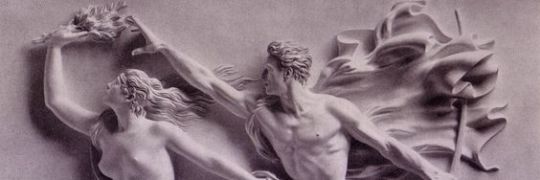
Pluto in Virgo - From 1956 to 1972
Like Virgo always does, Pluto in this sign tried to clean out the disasters of it's previous transit and put a little order to the chaos. On this transit appeared a lot of reforms and remodeling to clear up the situation and see what really works for population, after years of fear and chaos people were yearning for some social order and peace. The bad part about this... segregation and the start of cold war. Goverments tried to recollect information to use it againts other goverments, the race for the space and all the mechanichal improvements, but also there was a change in the population`s habits giving more importance to health and diet, recognizing that tools and resources that everybody used had toxic or harmful components, for many people with this placement bad aspected I've seen they have a weird but effective way of taking care of their body. Also there was a rise for careers related to health or mechanics through these years.
Pluto in Libra - From 1971 to 1984
This was a time for recognizing human rights and fight againts unjustice, society was involved in too many conflicts and this generation tried to redirect the focus to peace and diplomacy. New agreements related to marriage and divorce, in some countries divorce was illegal, so this also helped to break some toxic traits related to the expectations about marriage, in general there were new ways to understand realtionships. There was also a revalorization of art and recognition to some artist that were left aside. People started to unify as a collective to fight against the unfair and began to give more importance to equal rights, also to the beauty of nature like in Sempember of 1978, that year Quito, the capital of Ecuador became the first place to be into the World heritage.
Pluto in Scorpio - From 1983 to 1995
Our millennial generation! We have a lot to thank to this generation tbh. This Pluto transit appeared to break with many society taboos, making people emphathize with the ones who didn't had a voice before. In this transit people started to loose fear about death and sex, mostly for women who had been repressed the years before. Of course, there were sexual transmitions diseases but in this time people started to give it the proper importance to these kind of issues. Pluto is related to nuclear energy and in 1986 the world had to see Chernobyl and it's disastrous consequences, but remember too that many countries on those decades were making nuclear tests that also left terrible ressults for humanity. (if you like to there's a documentary on Netflix called 'dark tourist', in one of the episodes they go to a lake made out of an atomic explosion). As a random fact, through this transit appeared a lot of serial killers with sexual overtones.
Pluto in Sagittarius - From 1995 to 2008
How are you my fellows Sag Plutos? This transit came with massive existencial crisis where people stopped believing what others said it was good or bad, even more if that good or bad was written thousands of years ago. This generation learned to live life by their own philosophy instead of following religious beliefs, experience as a way of understanding. People from this generation are more open and prone to look for answers in different places because of the dissapointment with the previous beliefs systems. Through these years we can also see a decline in the main religions, people are not willing anymore to accept other's imposed truths without looking for the logic, but we have to say that it also brought religious radicalism. People from this generation are more open to new ways of experience spirituality and give human existence a meaning, this generation is open to things like meditation, astrology, chakras... The worst aspect of this transit would be that everyone wants to be heard but just a little are willing to listen.
Pluto in Capricorn - From 2008 to 2023
Well, this transit started hard with the global economical crisis of 2008, scandals about corruption in politics and banks, our sight of authority figures is not the same as before because all these scandals and the ones in the past, basicaly we don't fully trust our authority figures. People through this transit got a little obsessed about power, money and their social position but it also brought a lot of new jobs and ways of earning money and fame never seen before. Have you noticed how extremes has politics become lately? Also, public cancellations could have something to do with this transit? Like cancelling, somehow destroying (pluto) someone publicly ( Cap also rules our public image) Idk, let me know what you think about this because Capricorn is complex 🤔. Something curious about this placement is that people are trying to be their own bosses and work for themselves instead of working for others.
Pluto in Aquarius - From 1778 to 1798 (2023 to 2044 aprox)
Pluto is now on Aquarius, the last time it was there we had the French revolution, this year we have riots in France again. French revolution started because of unjustice and inequality, while the royalty were surrounded by luxury normal people were struggling to supply their basic needs, maybe a little like now?. Pluto also entered Aquarius in 2020 and we had a global crisis too. The good thing about this transit was that the century of the lights started with it, Pluto in Aquarius helped to develop critical sense and thinking, the circumstances made them focus on their unfair reality and how they could improve it for the common good. On 1791 Olympe de Gouges published the declaration of the rights of women as a response to the declaration of the right of men on 1789, defying the male supremacy of that time (she was a Taurus sun btw). We know what happened then, we'll see what it has for us now.
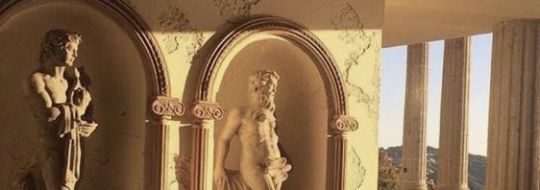
Please, feel free to add any other historic event and their pluto's transit, I would love to know what you think.
Let me know if you would like to know more about long transit planets and its impact in society through history.
Thank you
~ Lala 💖
Do not copy or repost
© Leo ascendente
#witchblr#leoascendente#astrology#astroblr#astrology pluto#western astrology#pluto signs#horoscope#zodiac signs#pluto placements#astro notes#astrology notes
97 notes
·
View notes
Text


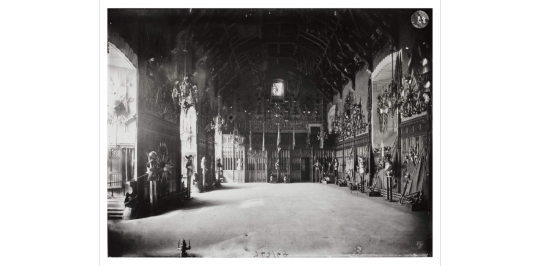
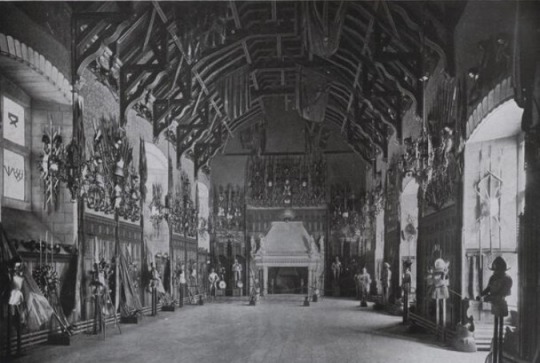


The Great Hall, Edinburgh Castle.
I read about our history almost every day, someti,es wee snippets, other times more in depth historical articles, in the main I take bits and pieces from all these to build the history posts that you see, keeping the majority short enough to keep your interest, longwinded posts can be a bit daunting, I leave it up to the readers if I have interested you enough to get you wanting more, hence sometimes I post a link with more info.
Yesterday I unearthed a pic of Edbrgh Castle's Great Hall and searched for others picking up a few things about the castle, as a tourist attraction, along the way. The pics date from 1895 an 1896, the first two, then 1913, and up to how it looks now.
In 1818 Walter Scott helped rediscover the Honours of Scotland, our Crown Jewels, it was after this that visitors were first allowed inside the castle to visit. In 1919 the first ordinary folk were invited to see the crown jewels, it would cost you One Shilling, and the only way to get a ticket was to write to Robert Cameron, Stationers at Number 2 Bank Street. At this point they set a limit on the num,ber of visitors, only 150 a day were graned admittance!
At this point in time, visitors were only allowed to visit the Crown Room to view the Scottish Regalia. The rest of the castle remained off-limits. Why? Because the rest of the castle was still an occupied military base.
Slowly through the years more and more was accesable to the public, one being St Margaret's Chapel, which up until 1845 was bit of a mystery. The earliest surviving building on the Castle Rock, tmay have been built by David I in memory of his mother, canonised as St Margaret in 1250.
The building was much altered during use as a magazine and munitions store from 16th-19th centuries. In 1845 the Chapel (then a storehouse at the W end of the 18th century garrison chapel) was rediscovered as such by the antiquarian Daniel Wilson. Surrounding buildings, including the garrison chapel, were demolished, and a simple restoration carried out. The stained glass was added iuntil n 1922 by Douglas Strachan.
In 1861 a feature was added that to this very day is a massive draw for tourists. The One O’Clock Gun had arrived! Initially the Time Ball had been set up on Calton Hill in 1852. This would drop at 1pm so the sailors in the Port of Leith to set their chronometers in order to navigate accurately at sea. As Edinburgh is not known for its fantastic weather, an audio signal was added in 1861 so sailors could hear the time signal if not see it.
During the victorian era there were major resorations, part of these included attempts to make it look more medieval, the Great Hall, where I started this wee hunt on facts, was restored in 1891, but for some reason there was a fallout with the Army and he refused to hand over the keys. It was eventually opened in October of 1892.
Remember all these buildings, up until the public access being allowed were used by the garrison stationed in the castle.
The last visitor figures avaible were from 2022 when 1,356,168 visited the castle, this was down from the prepandemic numbers of over 2 million, equating to around 10 thousand per day, not all the numbers are available but I did find out that one day in November 2020 during the pandemic there were only 148 visitors to the castle.
To this day the Crown Jewels are still the most popular attractions, nowadays there are queues, not only to get in there, but right down the esplanade to get in the castle itself. One thing that really annoys me is that you can't get close to the building, just to take pics of the statues of Wallace and King Robert without having tickets, or applied for entry into the building.....
20 notes
·
View notes
Text
"October 1852." "You broke my nose trying to teach me how to throw a right hook."
Stefan would have been nearly 6 here, given his birthday is in November. Putting Damon at 13. I can picture him thinking it's a great idea to teach baby Stefy how to fight and then bam...he's crying and bleeding. Cue freak out. Probably trying to clean it up and hide it the best he can.
"How much did you pay for that hunk of junk motorcycle that you ride." "That's a trick question. You bought me that motorcycle."
In spite of all their drama, Damon buying his baby brother a motorcycle is really sweet.
8 notes
·
View notes